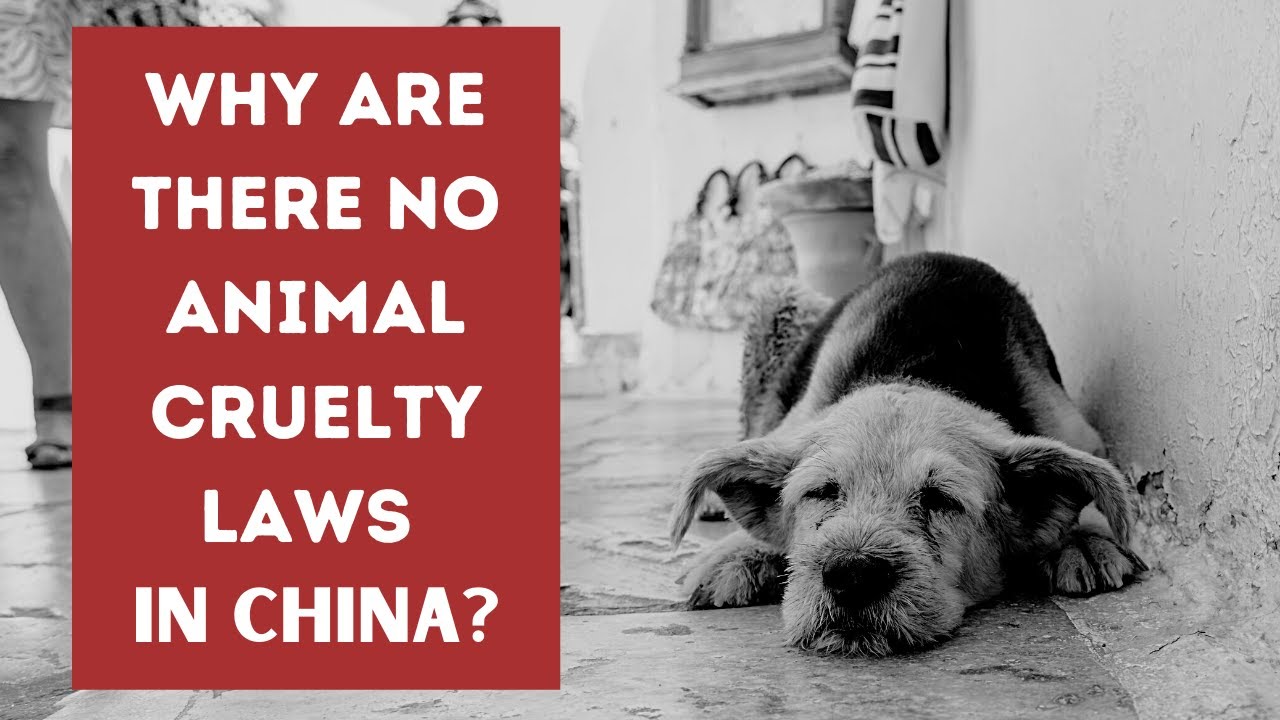When contemplating the complex landscape of animal welfare and legal protections, one inevitably turns an inquisitive eye towards China, a country often scrutinized for its treatment of animals. The vibrant tapestry of Chinese culture is interwoven with traditions that at times clash with contemporary ideals of animal rights. This article seeks to demystify the often-misunderstood legal framework surrounding animal cruelty in China, dissecting the prevailing myths from legal realities.
First, it is crucial to establish the definition of animal cruelty as it pertains to the Chinese context. The term encapsulates a spectrum of actions involving the deliberate infliction of suffering on animals, encompassing neglect, abuse, and exploitation. The perception of these actions can vary significantly from one culture to another. What may be deemed acceptable in one society can be anathema in another. Thus, painting a comprehensive picture of animal cruelty laws in China necessitates an examination of cultural, social, and legal components.
One notable myth is the belief that China lacks any form of animal protection laws altogether. While it is true that there is no comprehensive national law equivalent to the Animal Welfare Act in places like the United States, the veracity of this assertion is more nuanced. In 2009, the Ministry of Agriculture released the “Animal Husbandry Law,” which, while not explicitly addressing the welfare of companion animals, does outline standards for the treatment of livestock. This marks a significant initial step. Nevertheless, the regulatory framework is simplistic and lacks the enforcement mechanisms required to ensure compliance.
Moreover, the perception of animal rights remains fluid and contentious within Chinese society. Animals inhabit a dual role—some serve as companions, while others are viewed as commodities or sources of sustenance. Thus, the topic generates considerable debate, often straddling the boundaries between tradition and modernity. For instance, the infamous Yulin Dog Meat Festival, where thousands of dogs are consumed, evokes international outrage yet serves as a reflection of localized customs and culinary practices. The dissonance observed between advocates of animal rights and traditionalists highlights a fundamental contradiction woven into the fabric of Chinese animal culture.
In recent years, the dialogue surrounding animal rights in China has commenced an evolutionary trajectory. Major cities like Beijing and Shanghai have begun to adopt softer stances on animal welfare, effectively recognizing the burgeoning interest in pet ownership and the emotional bonds formed with animals. This shift indicates a gradual awakening to the notion of treating animals with dignity, as if they were sentient beings rather than mere possessions. Nonetheless, local ordinances vary significantly, further complicating the landscape. Some cities have introduced laws addressing pet abandonment, while others are lagging behind, maintaining the status quo.
Another prevailing myth concerns the perceived complete anonymity of animal cruelty offenders. This misapprehension utters a misplaced sense of impunity, suggesting that perpetrators escape without consequence. In reality, animal cruelty cases have attracted more scrutiny and public awareness in recent years, culminating in instances where individuals have faced legal repercussions for their actions, albeit sporadically. The challenge lies in the enforcement; while laws exist, the cultural silos surrounding animal use often hinder robust action from law enforcement.
The myth of inevitable and unchecked cruelty is further punctuated by sensational media portrayals, which tend to overlook the positive strides being taken. Local organizations and NGOs work diligently within the confines of existing laws, advocating for better treatment and humane practices. The emergence of grassroots movements centered on spaying, neutering, and rescuing stray animals embodies a burgeoning consciousness towards animal welfare.
International pressure has played a notable role in igniting discussions about consolidated animal protection laws. Globalization has brought various cultural constructs into closer juxtaposition, leading to advocacy campaigns aimed at curtailing practices deemed cruel. As China becomes increasingly integrated into the global community, it faces heightened scrutiny from international observers, significantly impacting its engagement with animal welfare issues.
In stark contrast to the past, there is a palpable shift towards recognizing animal welfare as a legitimate societal concern. Social media platforms amplify voices advocating for change, while public sentiment is gradually steering towards reformative measures. Initiatives like the establishment of animal rescue shelters and spay-neuter programs galvanize support, breaking down the barriers of misunderstanding and ignorance.
Despite the progress made, substantial obstacles remain. The myth that laws equate to actual change is perhaps the most pervasive. Legal frameworks, in their essence, cannot guarantee ethical treatment without cultural acknowledgment and a pervasive commitment to reform. True change demands a conscientious effort to educate the populace about the moral and ethical implications of animal welfare.
The future of animal cruelty laws in China remains a compelling narrative unfolding against a backdrop of tradition and innovation. The dichotomy between myth and reality reveals a society grappling with its past while pondering its future, navigating the delicate intersection of respect for cultural heritage and the moral obligation to advance animal welfare.
In conclusion, while animal cruelty laws may be sparse, the burgeoning awareness of animal rights in China reflects the transformative potential of dialogue and advocacy. The pathway to enhanced animal welfare is fraught with challenges, yet the seeds of change have been sown. As consciousness expands, so too does the possibility that one day these laws evolve from mere text into a living framework that ensures the compassionate treatment of all sentient beings. The enduring question lies not just within the legalities but within society’s evolving consciousness towards the voiceless. The journey continues, and with each step, a brighter future for animals in China comes into focus.








